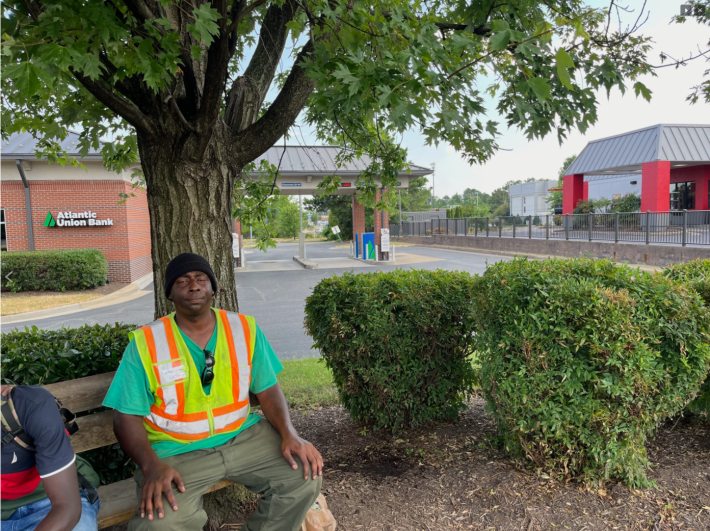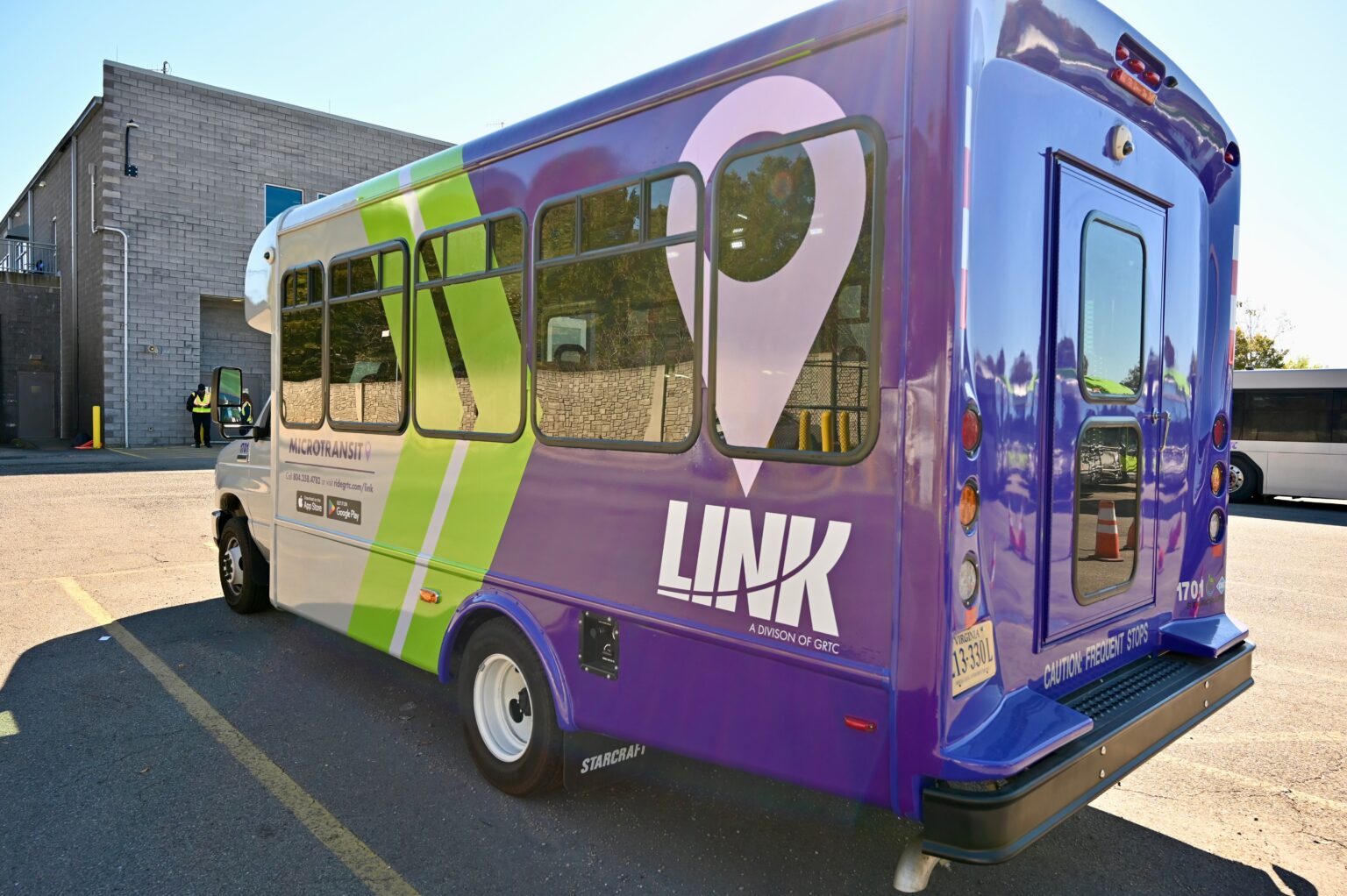Editor's note: This article originally appeared in the Virginia Mercury and is republished with permission.
In a recent Friday, Joshua Webb and several of his landscaping co-workers were doing their best to escape the late afternoon sun and humidity as they waited for the bus on Midlothian Turnpike in Chesterfield County to take them home.
That bus – the 1A – has been a lifeline for Webb, who started riding it to work as soon as the line was extended from its stopping point near Chippenham Parkway to Walmart Way in Chesterfield last January.
“The 1A is a straight shot here. It goes back to the transfer plaza. It’s very convenient,” Webb said.
It takes Webb about an hour to ride from his home on Commerce Road in Richmond to his job in North Chesterfield. He said taking the bus also helps him save money because it’s free. Before the extension, Webb would pay for Uber or Lyft.

“Our people who use public transportation in our region are very resilient,” said Faith Walker, Executive Director of RVA Rapid Transit, a non-profit advocacy group that seeks to improve the region’s bus system. “If you look at the numbers, 60% of them are using it to go to full-time positions.”
According to RVA Rapid Transit’s just-released 2024 State of Transit Report, 45% of riders use the bus to get to work, with the majority of riders – 70% – being Black. And in terms of gender breakdown, 49.4% are female riders.
And when it comes to the overall numbers, the Greater Richmond Transit Company is having a banner fiscal year, which ended June 30.
“So we hit 10 million riders for the fiscal year and one million riders for a month,” said Henry Bendon, GRTC spokesperson. “That 10 million is all routes [and] includes paratransit and our new micro transit service.”
Bendon said the success comes from having more investments, such as from the Central Virginia Transit Agency and the Virginia Department of Rail and Transit. The funding allows GRTC to be fully staffed and to extend their service further out of the city.
According to RVA Rapid Transit’s report, GRTC hired 120 employees within a 15-month span. Since April, the agency has had 318 people on its staff as full-time operators and 27 part-time operators, with eight more in training.
“Bringing 100 new people allowed us to expand service on the 1A, it allowed us to extend Route 19 into Goochland County,” Bendon said. “It’s allowing us to launch the Route 1 extension to Reynolds Community College,” which started June 30.
Bendon said it’s great to see growth on the fixed routes, but even better to see more riders using their other services, such as their paratransit service Care On Demand, their paratransit service, and their recently expanded door-to-door service LINK Microtransit.
“More people are able to access paratransit – it’s up 4% year on year,” Bendon said. “So that just means across all accounts, more people are able to go where they need to go.”
Bendon said the LINK service is meant to fill the gaps in places where traditional routes can’t go. In the past few months, it began operating in parts of Chesterfield, Powhatan and the northern part of Richmond known as the Azalea Zone, near Interstates 95 and 295.
On July 1, GRTC launched their fifth LINK Micotransit service area, covering the Sandston and Elko areas in Henrico County. Bendon added that since its launch in November, 2023, LINK has moved 15,000 people.
Walker of RVA Rapid Transit said these microtransit zones are lifesavers for many riders.
“It’s almost like an Uber service,” she said. “In rural areas, it allows for some type of service to exist.”
But Walker says there’s really only one reason why GRTC’s numbers are high.
“We have seen our region’s numbers increase in ridership over the last four years because of zero fare,” Walker said. “We see the benefit, but also the financial necessity that bus riders are having and experiencing because we know that rent is up, the cost of groceries is up. But what hasn’t gone up is people’s incomes. And so this is a backdoor boost in wages.”
With all the positive news of more riders and extensions to further locations, Walker said there is still room for improvement.
“We’re missing the ball when it comes to investment. I feel like we have made significant progress,” she said, with congratulations to GRTC’s board for prioritizing better wages for bus drivers. “But I think as a region, we are too far behind.”
Walker said each locality needs to look at where job centers are concentrated and then commit to funding GRTC to get transit there.
“The reason why people use public transportation in our city is to get to work,” she said.
In their State of Transit Report, RVA Rapid Transit has a breakdown of where transit has made progress since last year and where it’s still lacking.
“We want expansion to the Lego factory [in Chesterfield County] and the Chester Amazon fulfillment center. We’ve heard a lot of bus riders want access to this,” Walker said. “This is a major job zone.”
Walker said they want more big companies to come to the region and when they do, they need to invest in public transportation so everyone can have access to employment.






